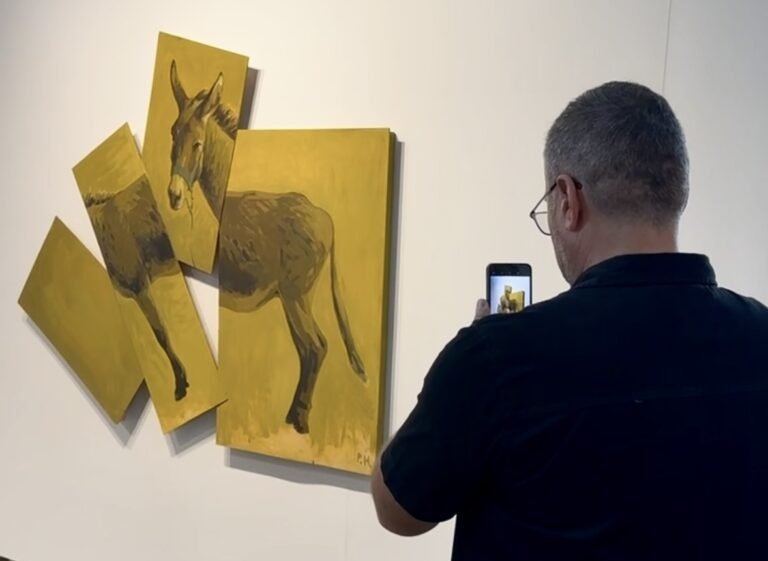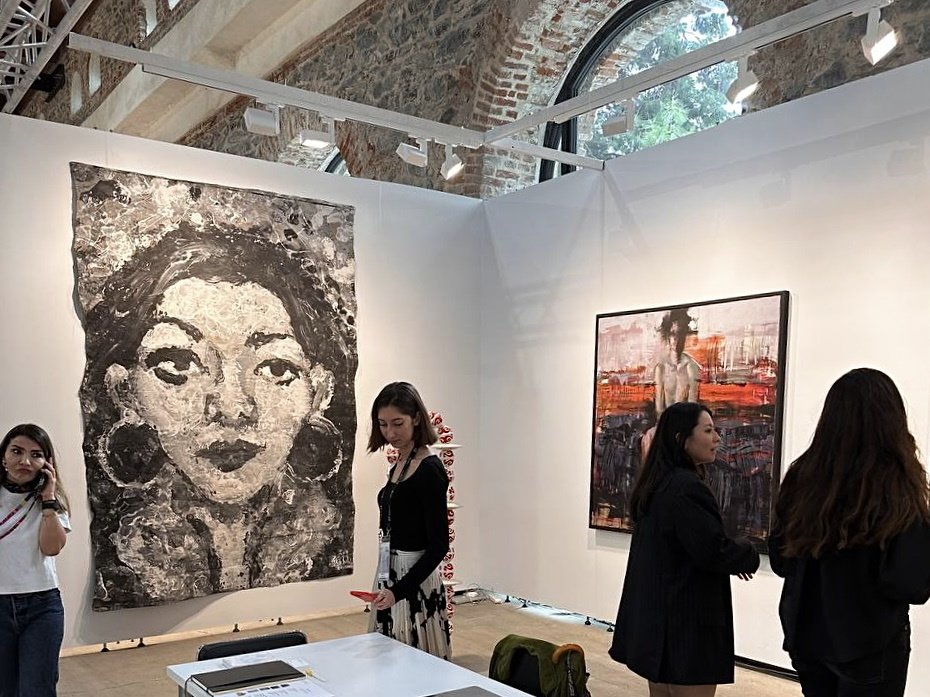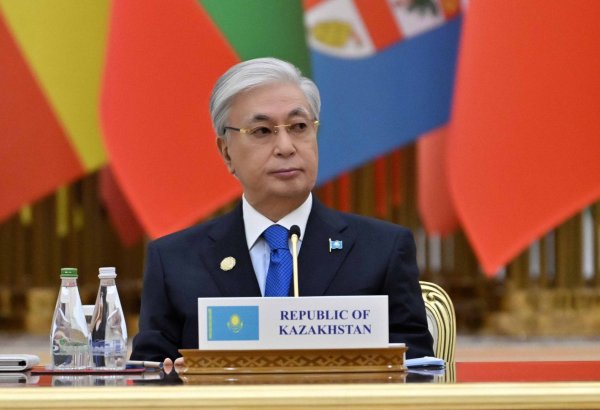ASTANA – This year, Kazakhstan participated in Contemporary Istanbul, Türkiye’s premier annual art fair, for the first time. Its 18th edition, which was held from Sept. 26 to Oct. 1, presented works of Kazakh artists from three generations, reports TurkicWorld with the reference to The Astana Times.
Supported by the Kazakh Ministry of Tourism and Sports and the Kazakh Tourism national company, the Almaty-based Aspan Gallery showcased its paintings and installations on nomadism, the key topic of the country’s exhibition stand.
Speaking about nomadism in an interview with The Astana Times, Irina Kharitonova, the research expert on cultural and creative industries in Central Asia, the Commonwealth of Independent States (CIS) and Europe, described it as “Kazakhstan’s unique code, which gives an unlimited opportunity for creativity and attracts the interest of other countries.”

“This is an interesting topic for the international art community. When I began to explore the origins of nomadism, I realized that the first nomads were creators who cared about the planet’s ecology. They were distinguished by a friendly attitude towards each other, and a big respect for the environment,” said Kharitonova.
One of the paintings from Kazakhstan’s stand was bought in the first days of the exhibition. It was a work of Nurbol Nurakhmet (1986), an artist of the younger generation.
He illustrated young human bodies, ghostly figures disappearing into the background in his “Crossing Borders” series (2017).

With the use of cinematic effects, Nurakhmet paints portraits, still-lives, and scenes of everyday life both traditionally and digitally.
In his “Olive Grove” installation (2018), Rashid Nurekeyev (1964) talks about the path of a man. The work depicts a donkey as a symbol of humility, peace, suffering, and service.
The collage technique is rooted in his childhood ideas supported by his grandmother – Nurekeyev used to cut out the pieces from newspapers and stick finished compositions on the home walls. The artist also works with photography and performances.

Askhat Akhmedyarov (1965) demonstrated a work called “Soyora” (2015) from his “Barefoot Art” series, where the author portrays historical figures and strangers on large black-and-white canvases.

The uniqueness of the technique comes from the name – Akhmedyarov paints with his bare feet. It reminds the artist of his teenage years when he often helped his father in rural construction by kneading the clay.
On top of that, Akhmedyarov presented his new sculpture, “Eclipse” (2023), created specifically for the fair using traditional Central Asian dishes – hand-painted kese (small ceramic bowls) and lyagans (large ceramic plates).
In kese, Kazakhs serve their traditional cold drinks, such as kumis, ayran, and shubat. Since ancient times, sour-milk products saved nomads from the heat and provided vitamins before the onset of cold weather.

Opening the doors to a deeper intercultural understanding and cooperation, Istanbul Contemporary’s 18th edition gathered 74 galleries from 22 countries. This year, the Istanbul fair broke the record – more than 54,000 people visited the art event.

Launched in 2006, it is committed to showcasing exceptional contemporary art and advancing new ideas through initiatives and collaborations with Turkish and international partners.






















